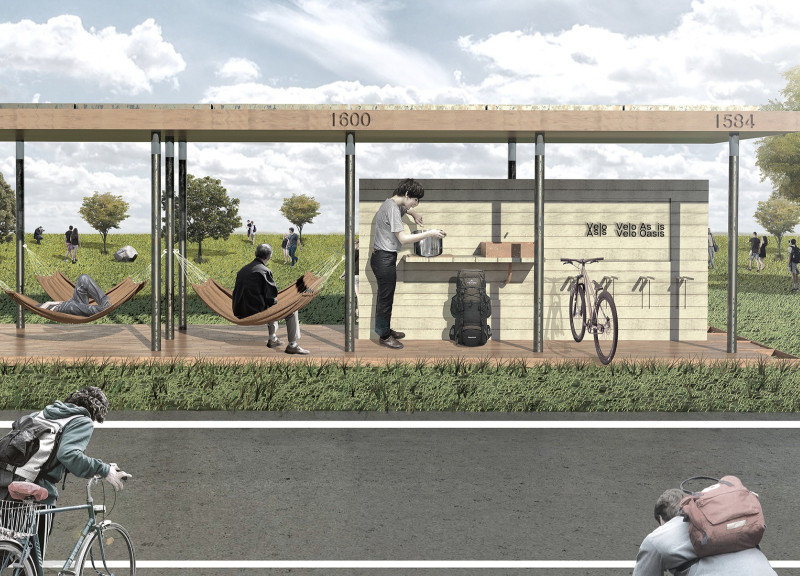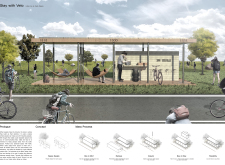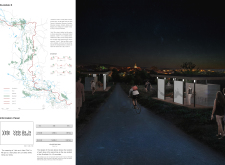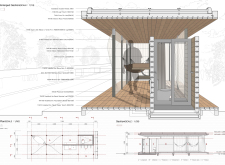5 key facts about this project
From the outset, the architecture exudes a sense of purpose and coherence. Its design encapsulates not only the technical aspects of construction but also a philosophy that encourages interaction between the structure and its surroundings. The integration of natural elements into the design highlights a growing trend in architecture that prioritizes biophilia, where human well-being is aligned with environmental health. By using materials such as concrete, glass, wood, steel, brick, and stone, the project achieves a harmony of durability and warmth. Each material choice has been made with both aesthetics and ecological impact in mind, reflecting a commitment to sustainability while offering users a comfortable and inviting atmosphere.
The exterior facade showcases a carefully curated composition of these materials, designed to engage with the natural light throughout the day. This thoughtful arrangement results in dynamic visual effects as sunlight shifts, casting changing shadows and reflections that continuously animate the building's surface. Large windows provide an ample connection between the indoors and outdoors, encouraging a flow of light and air that enhances the overall experience of the space. The generous use of glazing not only fosters a sense of spaciousness but also contributes to energy efficiency, reducing the need for artificial lighting during daylight hours.
Internally, the project's layout emphasizes a flexible use of space. Open-plan areas facilitate interaction while allowing for the easy reconfiguration of spaces to suit various activities. Private zones are carefully designed to provide retreat and introspection without sacrificing accessibility or comfort. This duality of spaces—social and private—demonstrates an understanding of modern living demands. The inclusion of multifunctional spaces can effectively adapt to changing needs, which is particularly important in today’s dynamic environments.
Moreover, the landscape around the structure has been meticulously designed to complement the architecture. Outdoor spaces such as gardens, terraces, or courtyards play an essential role in integrating the building into its environment, promoting not only aesthetic beauty but also ecological functionality. These elements encourage outdoor engagement, providing areas for relaxation and social interaction that enhance community ties.
The project's unique design approaches are evident through its commitment to innovation while remaining respectful of the past. It offers a fresh perspective while upholding traditional architectural elements in signage and detailing that relate to the local culture. This balance of new and old reflects a deep appreciation for context and history, instilling a sense of belonging for users and the broader community.
The strategic incorporation of sustainability features further sets this project apart. Elements such as green roofs, rainwater harvesting systems, and energy-efficient HVAC installations indicate a strong commitment to reducing the ecological footprint. These aspects not only make the architecture more efficient but also serve as a testament to the ingenuity of the design team in crafting a structure that is both practical and environmentally conscientious.
As you explore the project presentation, consider reviewing the architectural plans, architectural sections, and architectural designs to delve deeper into the thoughtful details that define this project. Each aspect contributes to a cohesive vision that resonates with those who engage with it, making it a noteworthy example of contemporary architecture in [insert geographical location]. The careful attention to both form and function ensures that this project will be a significant and lasting addition to its landscape, reflecting the ideals of modern living while promoting a connection to the natural world.


























